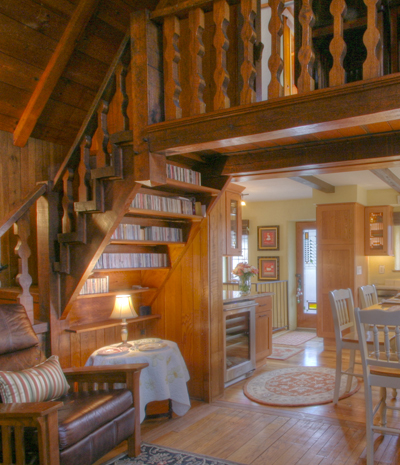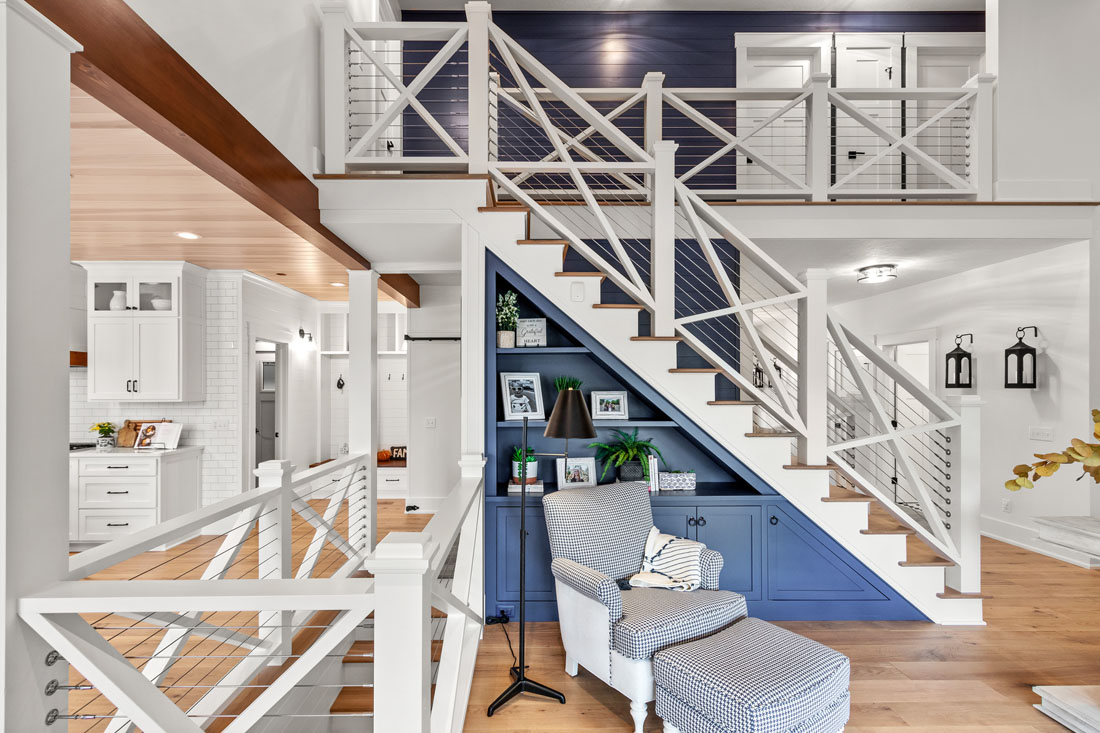
A Brief Primer on Stairs – Types, Parts, and Stair Design Ideas
The first home my wife and I owned was a brick Queen Anne built around 1900. I opened my first office there, in the attic.
It was a cool little space and I had a unique view of downtown from up there, once I’d climbed the 23 shallow, steep steps up from the first floor. Every day. No wonder I was always thinking about stair design ideas – especially how to have fewer of them!
Stairs are probably already a part of your daily home life, too – you go up and down them constantly, carrying laundry baskets, sleeping children, furniture; stepping over toys, pets, shoes…
And even though we’re very familiar with using stairs, we’re not nearly as familiar with how they fit into the design of a home – stairs are expensive, complex three-dimensional constructions that take up a lot of space and are highly regulated by building codes.
Stairs can also play a much larger role in a home than simple function; stairs can be sculpture; stairs can celebrate movement; and stairs can even be dramatic – what movie buff doesn’t know the “staircase scene” from 1939’s Gone With The Wind?; Mary Poppins sliding up the banister; or the moving staircases in Harry Potter and the Sorcerer’s Stone?
But you don’t need to be a Hollywood movie producer to make your stairs special – once you understand what you can (and can’t) do in a stair design.
All stairs are made from a unique set of parts with peculiar names that are often confused.
The two most easily confused terms are stair and stairway; the stair is the assembly of steps you walk on; the stairway or stairwell is the space the stair fits within.
A flight is a single set of stairs – many stairs are made from multiple flights.
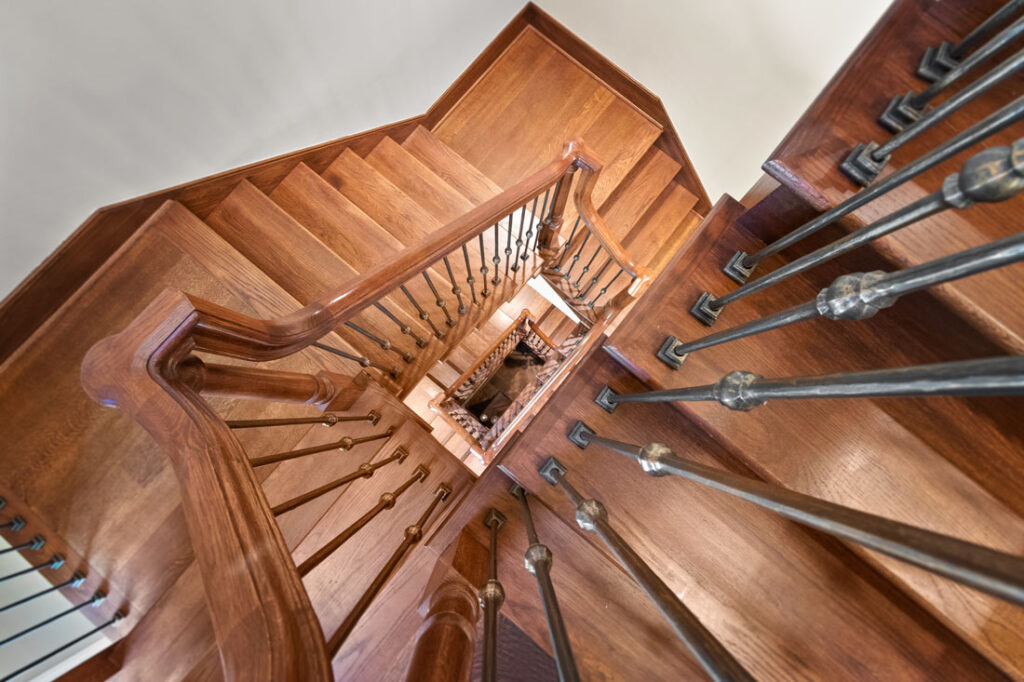
The part of the stair you step on (and leave toys on, and set laundry on) is called the tread; the vertical part that connects two treads is called the riser.
Flights of stairs are often connected to each other with a landing – basically one large tread. And most building codes require that each tread have a nosing – that’s the part of the tread that sticks out over the riser below.
So much for the parts of the stair that you walk on.
Because stairs are potentially dangerous, handrails are required to be installed on at least one side. A handrail is one part of a banister (more on that later). And if that’s all there was to it, we’d be done.
But handrails must be a certain size, designed to be comfortably grasped by your hand. And they must be at a certain height above the tread (remember the tread? See, you’re learning already), usually about 34 inches.
And while handrails are often attached to a wall, sometimes they’re not. At the top and bottom, freestanding handrails are supported by a newel post, which can be a nifty place for a little design expression.
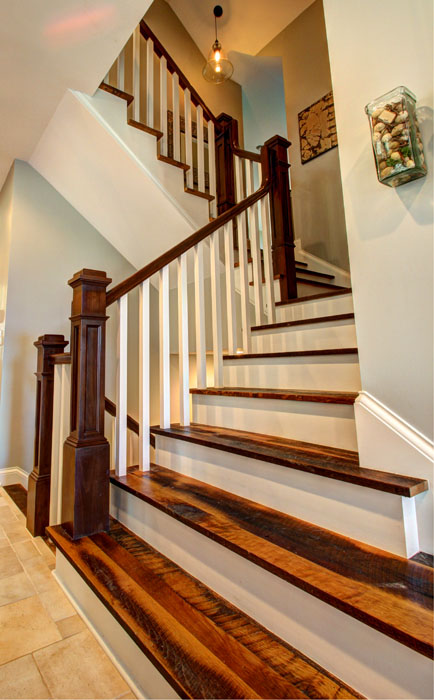
In the movies, the newel post is the part that brings “sliding down the banister” to an abrupt halt (ouch!).
Under the handrail you’ll often* find balusters, also called spindles.
Put the handrail, balusters, and newel post together and the whole thing is called the banister.
(*I say “often” because plenty of cool stairs out there have half-walls, or horizontal pipes, or cool artistic things going on instead of balusters).
There are a couple of common arrangements of stairs, although stairs can take just about any shape that meets code and is comfortable to use.
Check out the images in this article for some of the different kinds of stair arrangements, including the “switchback” stair – a design we use frequently in our home designs.
Switchback stairs are easier to work into some home designs, as they’re more compact than straight stairs. Switchback stairs have a large landing between two flights, allowing the stair to change direction. And sometimes, switchback stairs offer the opportunity to create a floor level at the landing – we’ve used these landings in our design work to create reading nooks, window seats, and small offices.
Curved and spiral stairs have special requirements. Both types of stairs require that the treads aren’t rectangular, as they are in other stair types. Stair treads in curved and spiral stairs are called winders. And winders must meet additional requirements for size and shape.
That’s part of why curved stairs take up more space, and cost more money than straight ones.
Spiral stairs are unique in that they can only rarely comply with building codes. They’re difficult to walk on and impossible to use when you’re carrying something.
That makes spiral stairs dangerous, and building codes don’t like dangerous.
But spiral stairs are tolerated by many building departments as long as they’re not the only stair in the house.
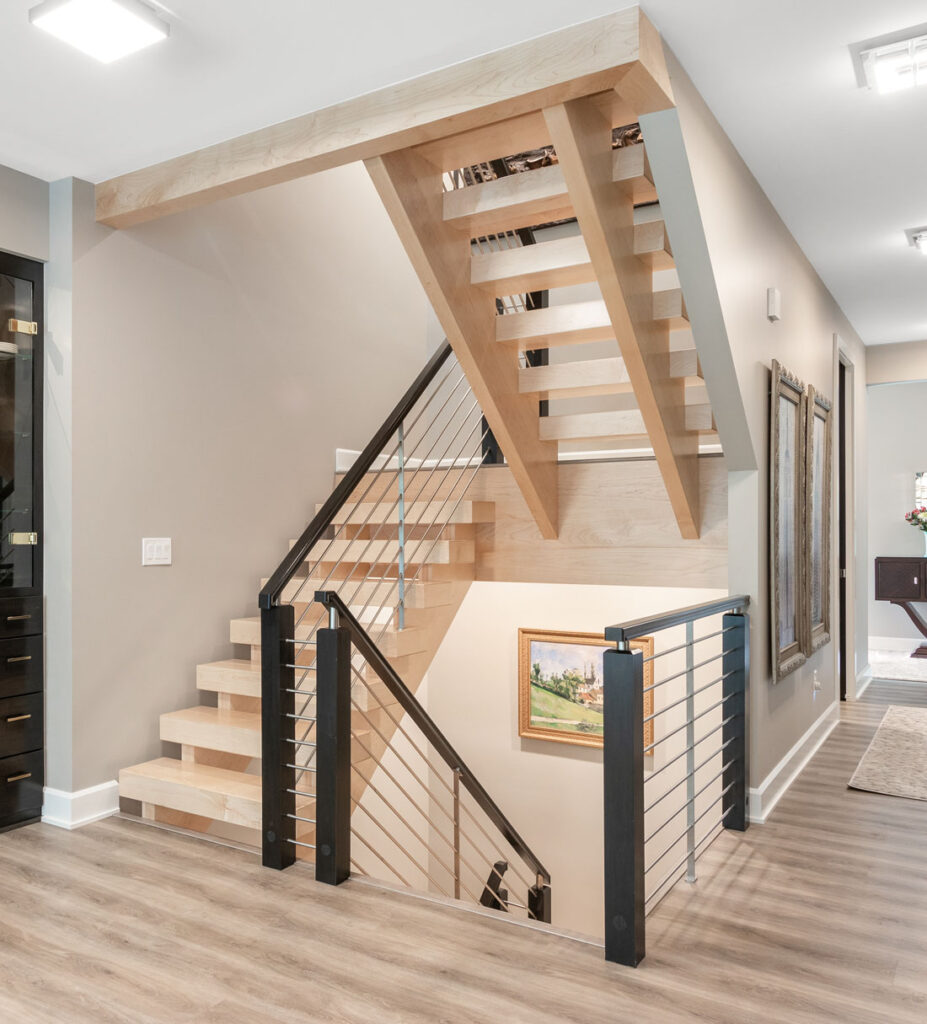
Stairs are probably the most regulated part of a house – and for good reason, as they’re the place where most accidents happen.
That’s why building codes regulate the size of treads and the height of risers; the design and location of handrails; and the headroom above the stair.
Stair regulations change frequently, usually resulting in each flight of stairs getting less steep and theoretically, more safe. Those changes usually go unnoticed by homeowners.
But some regulations can have a major impact on the look of your stairs.
For example, if your design requires balusters under the handrail (aren’t you glad we did the glossary first?), the spaces between those balusters must be a maximum of just under 4” apart.
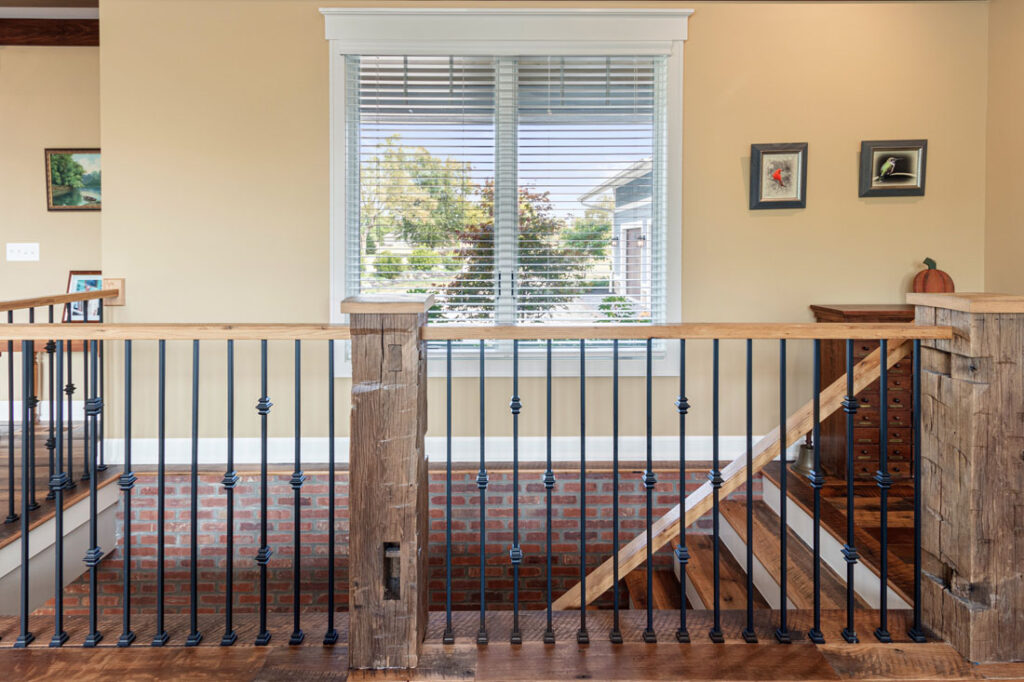
That takes a lot of building material to construct…and a lot of creativity to make the banister visually interesting.
A simply functional stair will always get you from one floor of your house to another.
But a well-designed stair can do more, and an imaginatively-designed stair can do a lot more. A bright, open stairwell with lots of windows can flood the house with light. A tall stairwell can help create natural convection currents, cooling the house without air conditioning.
A well-designed stair can be sculpture in a house, too – the combination of all those different stair parts creates an opportunity for artistic expression.
Make the stairs in your home something more than just transportation between floors; a little more thought during the design process won’t get your house a starring role in a movie, but it might make your stairs the highlight of your home.



